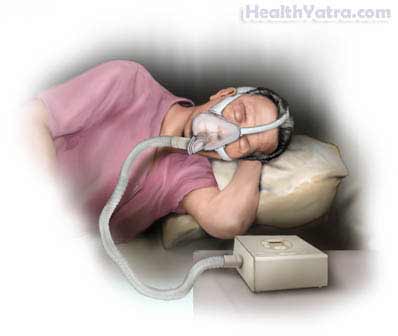Definition
Polysomnography (PSG) is a study of sleep cycles and sleep behavior. It is usually done in a sleep center overnight. This study involves observing a person at sleep while charting brain waves and other body functions.
Reasons for Test
This study can evaluate sleeping problems, such as:
- Trouble falling or staying asleep ( insomnia)
- Breathing that stops during sleep ( apnea)
- A problem with falling asleep suddenly during the day ( narcolepsy)
- Nightmares and sleepwalking
- Problems with arm or leg movement during sleep
Possible Complications
There are no major complications associated with this procedure.
What to Expect
Prior to Test
Before the test you may be asked to do the following:
- Wash your hair, but do not use any sprays, oils, or conditioners.
- Eat a normal dinner the night of the test.
- Do not drink alcohol or caffeinated beverages or take any sleeping aids before the test.
- Bring any medicines you are taking. When making the appointment for the sleep study, ask if you should keep taking your medicines in the days before the test.
- Bring comfortable pajamas and a bathrobe to wear.
Description of Test
You will arrive in the evening. You will be given time to relax in the room where you will sleep. Electrodes will be attached to your head, legs, and chest. Other monitors are placed around your chest, near your nose and mouth, and on your finger. You will be able to read and relax again until your bedtime.
For most of the night you will be able to move and turn during sleep. However, you may be asked to try to sleep in a certain position for part of the night. You will be observed by video during the night. This will be done in case sensors come loose or need to be removed for you to go to the bathroom. Sometimes it is clear during the test that you can benefit from an intervention, such as continuous positive airway pressure (CPAP). This intervention may be started midway through the night.

Your doctor may ask for an additional test for narcolepsy. The test is known as The Multiple Sleep Latency Test (MSLT). You will need to stay for part of the next day. You will be asked to nap for up to 20 minutes every two hours. The time it takes you to fall asleep and the time it takes you to go into deep sleep will be measured.
After Test
Your sensors will be removed in the morning. In most cases, you will be able to go home.
After the procedure, be sure to follow your doctor’s instructions .
How Long Will It Take?
About 10-12 hours
Will It Hurt?
No
Results
Results from this test may be ready right away. If not, then they are most often available within two weeks. Any abnormal breathing or leg movements during sleep will be noted. Your doctor will review the results and discuss them with you.
Call Your Doctor
There should be no side effects or complications from the study. Call your doctor if you have any concerns.
In case of an emergency, call for medical help right away.
